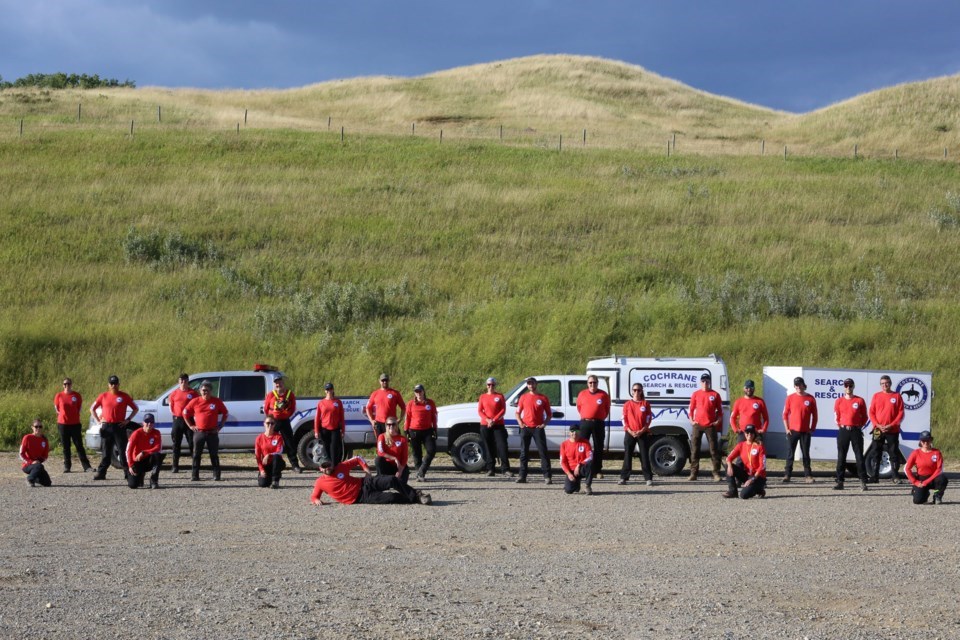COCHRANE—With hiking season right around the corner Cochrane Search and Rescue are gearing up for another busy year.
Many search and rescue organizations broke records last year in terms of the number of responses they were tasked with and Cochrane Search and Rescue was no exception.
The organization responded to 35 incidents last year, 24 incidents in 2019 and only 19 in 2018.
“Last year was a special year,” said Aline Garant, search manager with Cochrane Search and Rescue.
“Definitely COVID played a big part in that,” said Jeremy Olesiuk team leader and trainer with Cochrane Search and Rescue. “People were getting out because they had nothing else to do. They couldn’t go to B.C., they couldn’t go travelling anywhere, and a lot of people that were getting out didn’t know how to get out safely.”
Garant added that she believed it was both the sheer numbers of hikers, and lack of proper preparation led to the inflated number of rescues in 2020.
“There is so much information out there if people are interested in getting educated as to what might help them as they’re venturing out for the first time, or if they’re new to the activity,” Garant said.
Before you head out, even for a day hike, having a trip plan is crucial.
“If they hear about a trip plan, they get afraid of it because they overcomplicate it. All it has to be is just letting somebody that’s reliable know where you’re going and when you expect to be back, and if you’re not back at that time this is what to do and who to call,” said Olesiuk. “That’s as simple as it can be, but it has to be done every time.”
Garant added that it is important to let that same person know when you get back so they know they are safe.
Each trip is unique and the details for each plan should reflect that trip, Olesiuk said.
The members of Cochrane Search and Rescue have a set list of gear that they carry on them when they go into the backcountry.
The basic list includes:
- Shelter, something as simple as an emergency blanket, or emergency bivvy.
- Extra clothing, a rain jacket, hat and extra socks.
- A source of a light that is not your cell phone, like a flashlight or headlamp.
- Extra food and snacks.
- A source of fire.
- A knife.
- Bear spray.
- A first aid kit.
A pen-flare, mirror or foil emergency blanket can be used as a signalling device.
“I would be ensuring that I have something for shelter, water or some purification system, and something to keep yourself warm, but also to keep your mental state where it should be so you can better make it through the night,” Garant said. “You typically plan to go on a day hike, but you should plan to spend 24-hours out there, and ask if you have everything you need.”
GPS or a personal beacon can be very handy tools to carry with you into the backcountry, but Garant warned against becoming too reliant on technology.
“Technology is wonderful, but it can be a double-edged sword,” she said. “If there is too much reliance on new technology, coupled with inexperience in using it, it can get you into more trouble because you’re relying on something you’re not exercised in using.”
Many people rely on their cell phones for these sorts of things, which can be a light source, camera and GPS all in one, but once the battery dies the user can be in trouble.
Garant said a map and compass is often the most reliable form of navigation.
Education is key in backcountry safety, Olesiuk said.
“You can have all the gear— There’s that saying, right? All the gear and no idea— but you need to know how to use it, and you need to have used it and practiced with it,” he said.
If you do end up getting lost, it’s important to stay put.
“If you’ve done your homework and you’ve done your trip planning and you have let someone know when you’re expected back it makes our job that much easier if you’ve stayed a kilometre off the trail as opposed to wandering off for three or four,” she said. “Somebody will be out there looking for you if you’ve let somebody know where you’re going and when you’re expected to be back.”
Cochrane Search and Rescue offers several how-to videos on their YouTube channel.
Both Garant and Olesiuk agreed that the AdventureSmart program is a great starting point for anyone who is looking to further their wilderness education.




